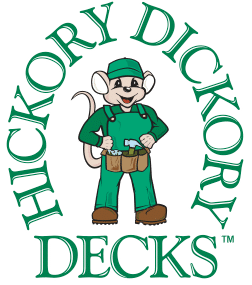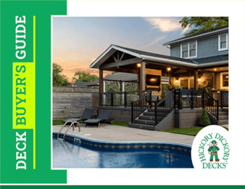
What is Composite Decking Made Of?
Composite decking is an increasingly popular choice for deck builds. However, we are often asked what composite decking is made of.
What is Composite Decking?
Composite decking is a combination of pre- and post-consumer recycled plastic and wood fibres. Depending on the manufacturer, it may also contain other organic substances such as rice hulls.
Popular Composite Deck Manufacturers
Popular brand names of composite decking include Trex, TimberTech, IDekk and Moisture Sheild.
Trex was the brand that first introduced composite decking back in 1996. Their first decking board was patented in 1998, but other companies soon followed their lead. Using plastic that would have otherwise ended up in landfills (from milk jugs, plastic bags, etc.), the company blended that plastic with wood fibres to create a durable and low-maintenance decking board. Since then, composite boards have gone through many upgrades with improved technology.
What are Capped Composite Boards?
Capped composite boards are made basically the same way as regular composite boards. The main difference is that they have a non-organic plastic cap or shell that protects the board’s core from the elements.
Companies including Trex, TimberTech, Armadillo, Fiberon, TruNorth, IDekk and Moisture Shield all offer capped composite decking as an option. Capped boards are considerably more durable and resistant to staining, fading, mold, and mildew than their uncapped counterparts.
These composite decking boards may be capped just on one side (the side that would be facing up on your deck), or may be completely encased in the capping for even greater protection against the elements.
What is PVC Decking?
Finally, there are vinyl or PVC (short for polyvinyl chloride – aka plastic) decking boards which are comprised solely of non-organic plastic materials. Usually, this type of board has a vinyl foam core and vinyl cap. Popular PVC brands include Clubhouse, Veka, Azek, Fiberon and Zuri.
PVC decking is typically manufactured from recycled plastics, which makes it a good option for any eco-conscious homeowner. The lack of any wood in the product means that this type of decking is extremely low maintenance and is not susceptible to mold or mildew.
PVC is also harder and more scratch resistant than composite boards – and because the colour is embedded in the plastic and not just applied to the top, it holds its colour better. Many PVC boards look just as nice if not nicer than the capped composites.
If you would like more information on composite decking, we invite you to contact Hickory Dickory Decks today.

































